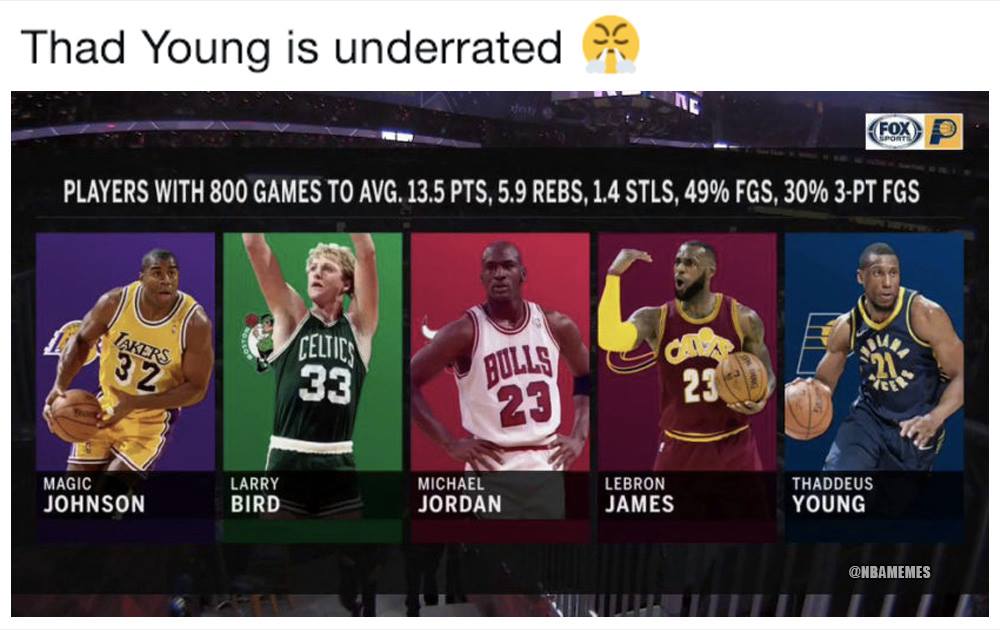Darius Garland Is Pretty Damn SpecialThe NBA’s next great guard can be found in Cleveland. As the injuries have piled up for the Cavaliers, Darius Garland has proved to be an outlier capable of just about anything.:format(webp)/cdn.vox-cdn.com/uploads/chorus_image/image/70442731/GarlandBreakingOut_Getty_Ringer.0.jpeg)
It’s easy to forget sometimes, given the remarkable and near-instantaneous success that players like Trae Young, Luka Doncic, Ja Morant, and LaMelo Ball have experienced in recent years, but being a young point guard in the NBA is hard. Like, really, really hard.
As it turns out, Darius Garland looks
pretty damn special.The Cavs are one of the 2021-22 NBA season’s best stories, sitting just a game and a half out of first place in the East at 30-19 after Wednesday’s decisive smackdown of the defending champion Bucks. Their 22-year-old lead guard is a huge reason, averaging 19.7 points on a .575 true shooting percentage to go with 8.2 assists (sixth most in the NBA), 3.3 rebounds, and 1.3 steals in 34.7 minutes per game as the engine of a Cleveland offense that’s ranked just outside the top 10 in points scored per possession since Thanksgiving. The list of players who’ve averaged 19 and 8 by Garland’s age while shooting as efficiently as he is boasts only five names: Magic Johnson, Kevin Johnson, Chris Paul, Luka, and Trae.
Garland was already starting to blossom early in the season, as Cleveland began looking like a team poised to outperform pundits’ predictions. As the campaign has worn on, though, and injuries started to shred the Cavs’ backcourt rotation—a torn meniscus for Collin Sexton, a torn ACL for Rubio—his game has grown even further to fill the voids they’ve left behind.
During this recent stretch, Garland has averaged more touches per game than Doncic and Harden, and held on to the ball longer than Trae and Ja. Part of that’s out of necessity; until an emergency trade for Rajon Rondo, the injury-riddled Cavs didn’t have another viable ball handler to turn to (with apologies to Kevin Pangos). Part of it, though, is because Garland’s been so good at keeping the trains running on time that Bickerstaff has justifiably wanted the ball in his hands as much as humanly possible.
Already one of the league’s highest-volume drivers, Garland’s averaging nearly 18 forays to the paint per game since Rubio’s injury; only Shai Gilgeous-Alexander, Ja Morant, Luka Doncic, and Trae Young have averaged that many over the full season. That persistent
dribble penetration collapses opposing defenses, opening the door for the lobs that Garland loves to throw to Allen and Mobley, slick drop-offs to attentive cutters, and kickout passes to waiting shooters on the perimeter.
Dealing with a point guard who can puncture your coverage and spray passes all over the court is tough enough; covering one who can also get his own shot from anywhere can be downright impossible. Despite his recent shooting dip, Garland’s become that kind of ulcer-inducer, a threat to both launch from super deep—only Trae, Stephen Curry, and Damian Lillard have taken more 30-footers this season, and Garland’s made them more often (43.2 percent) than all of them—and to leverage the fear of those bombs to get into the underbelly of the defense and find something tasty.
And if you manage to avoid the blow-by and the stop-and-pop, and stay attached to his rolling big to prevent the easy lob over the top? Bad news: You’ve just given him the runway to get to
his lethal, floater/runner game—shots released from all angles that are gently finding the bottom of the net nearly 53 percent of the time.
The growth shows in the quieter aspects of Garland’s facilitating, too. It’s in the quick hit-ahead passes off of a defensive rebound, helping find early offense and easy buckets for an athletic young team that can struggle to score in the half court. It’s in understanding the importance of rewarding his bigs, who’ve been the backbones of Cleveland’s no. 3-ranked defense, when they run the floor, duck in for deep seals on defenders in the paint, and roll hard to the rim.
And increasingly, as opponents start focusing their game plans more on keeping Garland from going off, it’s in having the patience to accept double-teams and traps and just move the ball, trusting in his teammates to serve as release valves who can keep the offense rolling.



















:format(webp)/cdn.vox-cdn.com/uploads/chorus_image/image/70442731/GarlandBreakingOut_Getty_Ringer.0.jpeg)

